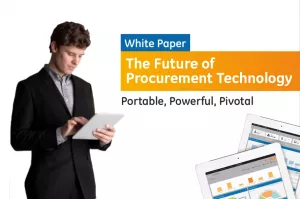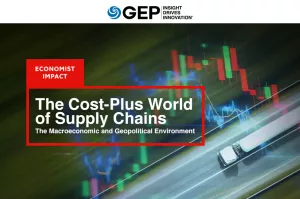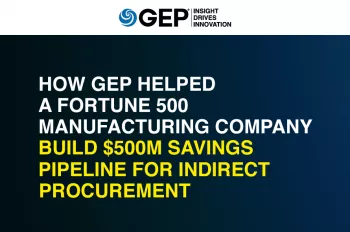Executive Summary
Procurement technology—largely divided into Source-to-Contract and Procure-to-Pay—has become a de facto platform for companies' purchase teams to manage their procurement of goods and services, suppliers, and budgets. Procurement technology today offers extensive integration, visibility, and controls to the enterprise, helping purchasing executives operate more efficiently while saving from such economies. But it isn't stopping here.
“The Future of Procurement Technology” envisions tomorrow's procurement offices, trends in procurement technology evolution, and how they will impact a company's fortunes. From a multimodular set of tools that drive the markets today, the procurement ecosystem is moving to a unified Source-to-Settle platform for tomorrow.
At GEP, we consider FIVE key drivers that propel Procurement Technology into tomorrow:
- Procurement-as-a-Platform: The entire procurement process is driven from a platform where every user has access to all features and processes without having to manage multiple silo modules
- Native mobility: The entire procurement platform will be conceived, designed and operated as mobile. The platform will be backward compatible with the web and not other way round
- Built-in social collaboration: Our view is that tomorrow’s procurement technology will include social intelligence that will bring suppliers and buyers closer, with higher efficiency and transparency
- Creative Features: Tomorrow’s procurement platform will have creative features such as sourcing workbench, supplier enabled innovation, knowledge management, market intelligence among other things
- Intuitive intelligence: The complex analytics and dashboards of today will become intuitive alert-and-report mechanisms for tomorrow, proactively delivering actionable information to users using big data and newly developed analytical Tools
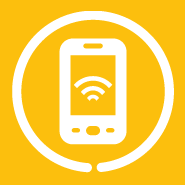 Technology Trends
Technology Trends
In what Gartner calls the “Nexus of Forces”, four key trends are impacting the way businesses have traditionally considered existing processes, customer engagement, and product/services delivery to their markets.
“In the Nexus of Forces, information is the context for delivering enhanced social and mobile experiences. Mobile devices are a platform for effective social networking and new ways of work. Social networks link people to their work and to each other in new and unexpected ways. Cloud enables delivery of information and functionality to users and systems.”
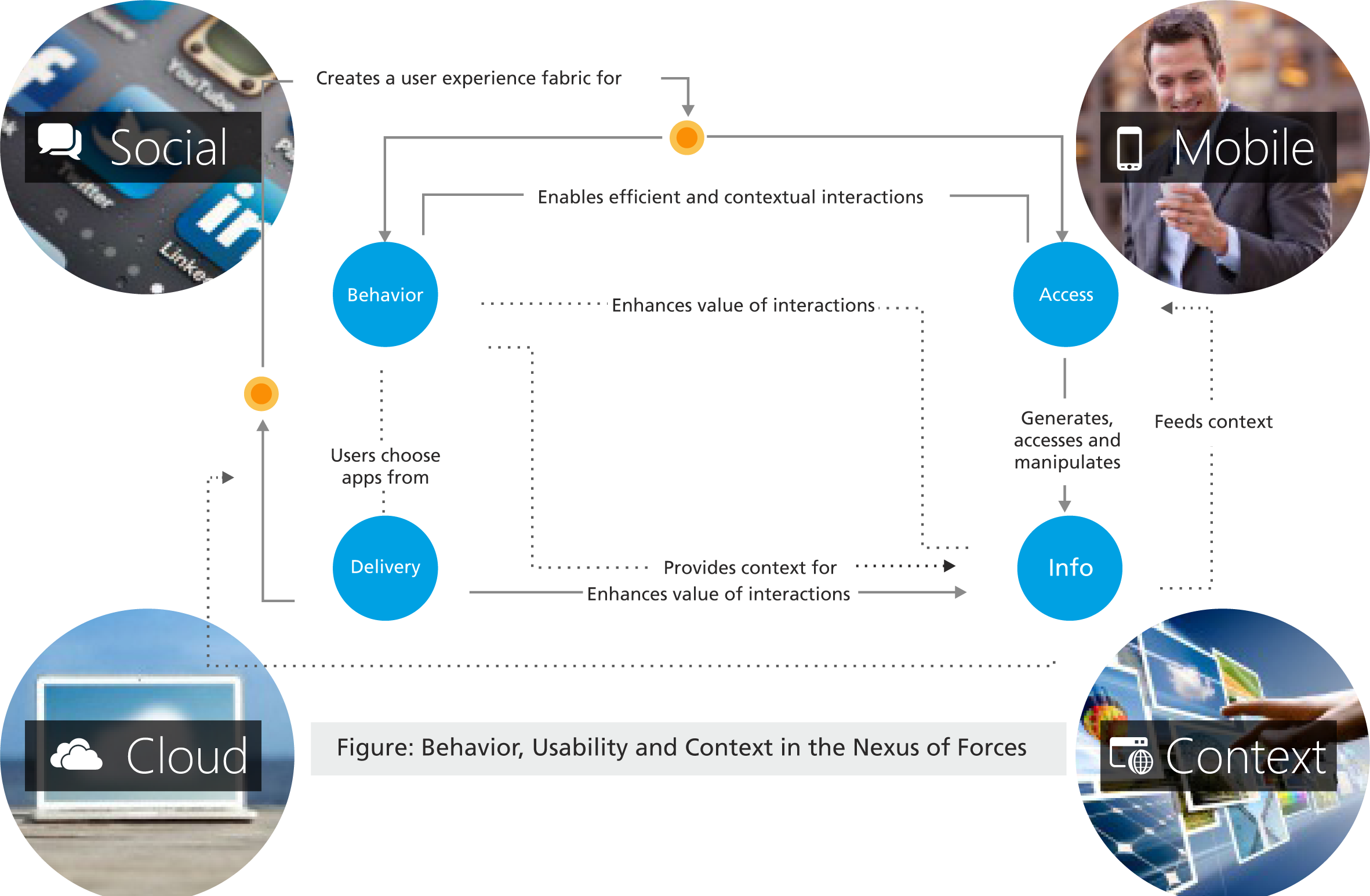
 Cloud and the Procurement Ecosystem
Cloud and the Procurement Ecosystem
The maturing of cloud computing and increased adoption of Platform-as-a-Service will impact the Procurement Ecosystem in many ways. Over the past decades, procurement technology evolved as a series of modules, even as enterprises discovered processes that could be mapped into software—sourcing, contracts, purchase, payments, catalogs, and so on. Today's procurement are aggressively integrating all these disparate modules to offer a “source-to-settle” solution. We would like to point out the difference between a fully integrated procurement suite vs procurement platform. An integrated suite allows the flow of data from one module to another. The system is designed at a modular level and then provided the plumbing to connect these disparate modules. On the other hand, a procurement platform conceived & designed with a view of all the activities, functions and processes a buyers does and hence the concept of modules has less meaning in the platform.
In “The Changing Cloud Agenda”, Forrester analysts outline how CIOs are leveraging the Platform- and Infrastructure-as-a-Service advantages to drive new solutions to existing problems, and preparing to embrace new capabilities for tomorrow.
Microsoft Azure, Amazon EC2, the Google Engine are all examples of how players are scaling up capabilities to offer application abstraction layers and hosted middleware benefits to help enterprises leverage the cloud more seamlessly and effectively.
Platform-as-a-Service like Microsoft Azure can connect oncompanies premises applications with each other or map between different sets of identity information. Such environments can help Independent Software Vendors (ISV) create scalable applications and services that support multi-tier scenarios and automated deployments. Combined with the powerful Cloud Services (containers of hosted applications), these applications can be internet-facing public web applications (such as web sites and ecommerce solutions), or they can be private processing engines for other work, such as processing orders or analyzing data.
As an increasing number of developers begin publishing data in the public cloud while retaining access controls, information in the cloud is disrupting traditional procurement processes in the following ways:

Existing legacy systems, as well as older packaged solutions, are often efficient in the business process support for which they were designed. However, they lack what today's end users expect in usability, self-service, or mobile device support. Instead of either replacing or rearchitecting the end-to-end inhouse solution, companies integrate cloud applications to reach existing (and many new) business users with web-native, multi-device front-end support.
- Forrester
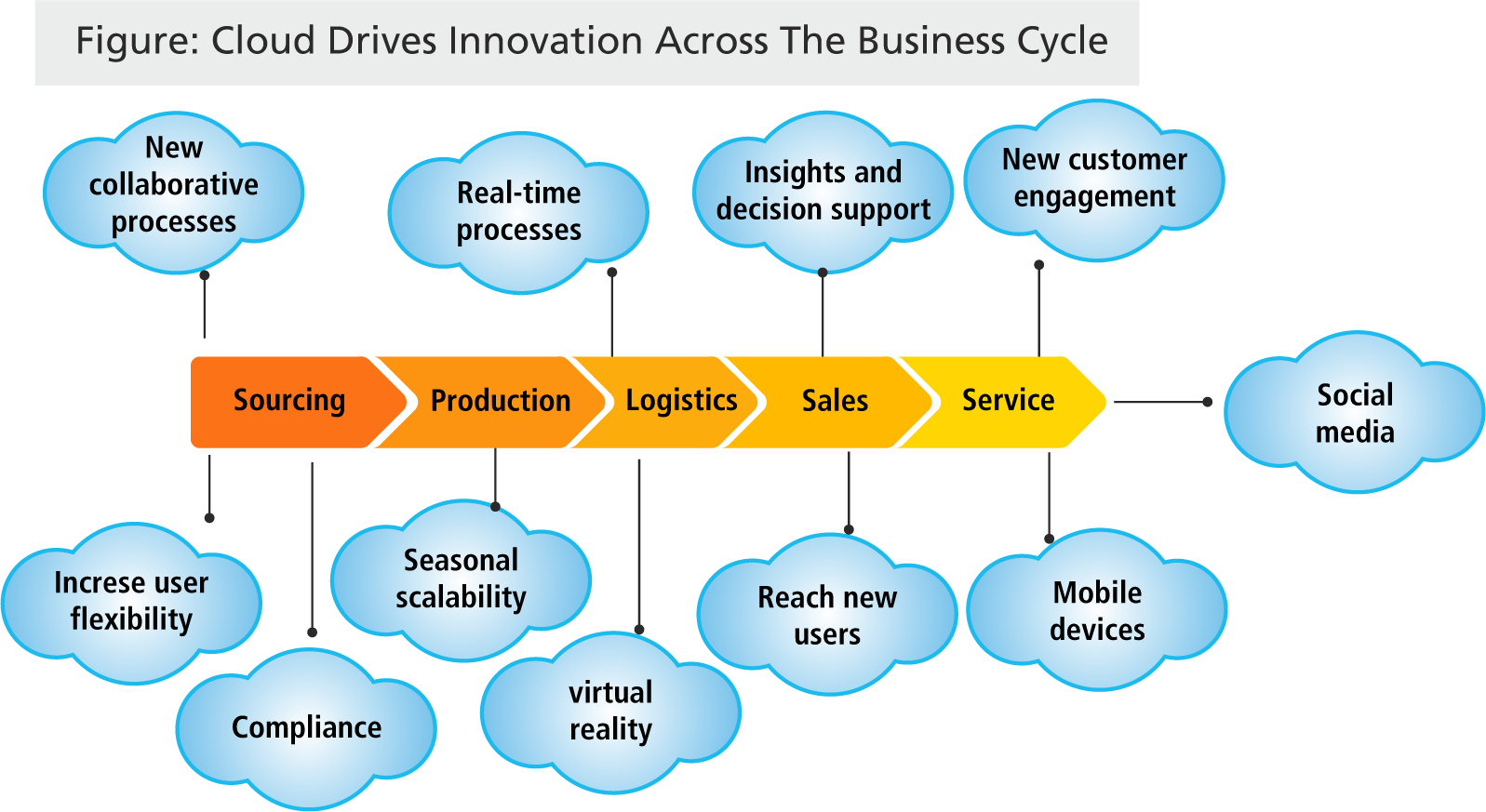
 Automation across the Ecosystem
Automation across the Ecosystem
Source-to-settlement solutions of the future will be open architecture, web-based, and able to interface with many systems inside and outside the enterprise, allowing for a high level of automation and integration up and down supply chains, fully adopted, providing full transparency and real-time insight. This will enable end-users to execute non-critical transactions themselves using the procurement platform, and resort to the procurement office in complex purchasing concerns. The procurement of the future will be truly user-driven and not office-controlled.
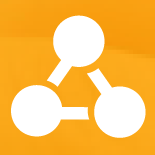 Integral to Innovation
Integral to Innovation
Quite like how ERP platforms like PLM influence an enterprise’s innovation lifecycle, Procurement-for-Innovation will become a standard in the future. Enterprises frequently need new technology, product, or services that are not fully defined even as their innovation cycles evolve. Procurement can play a key role in identifying unique suppliers, products or services that can help fulfill innovation needs, as supplier networks in public clouds become highly available.
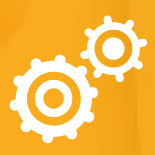 Procurement-as-a-Service
Procurement-as-a-Service
Salesforce.com disrupted the traditional CRM installed models, and gained millions of customers by offering custom pricing (per user) for a fully integrated CRM platform, analytics, and intelligence. Tomorrow's procurement could mimic the leader in CRM, where procurement technology companies offer their platforms with custom pricing and expand the market to include small and medium businesses to automate their procurement.
 GEP's vision of the Future Procurement Platform
GEP's vision of the Future Procurement Platform
At GEP, we are seeing the next wave of procurement technology ready to accelerate the globally networked enterprise into the future. We categorize them as follows:
Available:
Procurement technology becomes ubiquitously available to enterprise users. The data and information will be available 24x7x365. The data and information will be available to all companies using this platform. The different between company A and company B will be wisdom gained from such knowledge.
Accelerate:
Even as business leaders seek to leverage market opportunities in real-time, procurement will help play a role in shortening their time from source to settle aided by open supplier networks, real time information, and new sourcing discovery through collaboration.
Accommodate:
As the next generation of users enters the workplace, procurement technology will be more intuitive and highly accommodative of the generational work style. It will involve minimal or no learning curve to operate in the procurement ecosystem, and information/intelligence will be proactively available for decision-making at their mobile devices.
Advance:
The procurement platform of tomorrow will be a true window of predictive opportunity as open collaboration, global supplier intelligence, and peer network information turn into actionable intelligence for an enterprise decision maker.
The platform of the future will be mobile in nature with built in features such as voice activated commands. The platform will have built in contextual interactions with artificial intelligence layer to make users' life easier. The platform will have open supplier network with social and collaborative features.

Neha Desai Shah
Executive Vice President of Business Development & Co-founder
"Beyond all this, we see tomorrow's procurement technology as a key driver for innovation."
Tomorrow's procurement technology will intuitively map market news, new product announcements, political shifts, and geographic events into intelligent opportunities for businesses to leverage. Since procurement technology is pervasively embedded within supplier circles across geographies, it has a disruptive advantage of amassing the wealth of information from such distributed entities to deliver insightful knowledge to buyer communities. Such intelligence will help decision makers drive new business opportunities into reality much faster, more reliably, and with higher profitability.
Theme: Strategy and Planning

